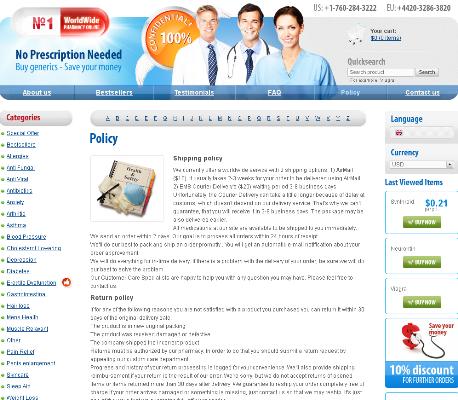Managing Dryness: Skincare Tips during Isotretinoin
Understand What to Expect: Dryness and Timeline
Starting isotretinoin feels like stepping into a dry desert: early excitement gives way to creeping tightness as skin loses oil. Expect symptoms within weeks; some notice flakes quickly, others see slow changes. Pace varies person-to-person.
Dryness peaks typically by one to three months, then improves gradually after treatment ends, though lips and nasal passages may remain fragile. Hydration routines should scale up early; overdoing actives can worsen the situation again.
Think of care as prevention: consistent moisturizers, balm layers for lips, and gentle cleansing reduce flakiness and sensitivity. Track changes in a log to share with your dermatologist; adjustments are often small but effective daily.
Remember: comfort improves with time, but patience is key. Definately communicate severe cracking or bleeding immediately. Simple routine tweaks and barrier-focused products usually restore balance; celebrate small wins during this challenging period and stay hopeful.
| Stage | Timing |
|---|---|
| Early | Weeks 1–4 |
| Peak | Months 1–3 |
Switch to Ultra-gentle, Ph-balanced Cleansing Rituals

In the first days on isotretinoin, cleansing becomes a mindful ritual not a rush. Use lukewarm water and fragrance-free, pH-balanced gel or cream cleanser; avoid foaming soaps that strip oils. Teh goal is gentle removal of dirt without disrupting natural lipids, so wash twice daily and pat dry.
Follow with thin layers of moisturizer while still damp to seal hydration. If irritation occurs, reduce frequency and ask your dermatologist about milder options—this is neccessary to prevent flares. A calm, consistent routine keeps dryness manageable and supports barrier recovery over time.
Prioritize Barrier-repair Moisturizers with Ceramides and Hyaluronic Acid
Your skin after starting isotretinoin often feels tight and raw; think of it as a winter landscape that needs slow, steady restoration. Reach for creams that rebuild lipids and boost water retention—look for ceramides, cholesterol and hyaluronic acid—to soothe redness and reduce transepidermal water loss. In the first weeks, apply small amounts twice daily and let products sink in before layering sunscreen or makeup.
Think of moisturizers as repair kits: occlusives like petrolatum lock in moisture overnight, while humectants draw water into the skin. Avoid heavy fragrances and active acids that can exacerbate flaking; patch-test new items on the jawline and wait 48 hours. If irritation persists, simplify to two gentle products and consult your dermatologist. Teh goal is to maintain comfort without blocking medical treatment progress, making dryness manageable rather than disruptive. Celebrate small wins as skin recovers slowly.
Treat Cracked Lips and Delicate Areas Daily

My lips felt like desert sand when I started isotretinoin, so I learned a simple ritual: balm every hour, overnight occlusive, and gentle exfoliation once a week with a soft cloth. This kept fissures from spreading and made speaking and smiling less painful.
For delicate areas I used fragrance-free ointments, barrier-repair ingredients like petrolatum and niacinamide, and avoided acidic serums. If cracks bleed or infection signs appear, contact your prescriber; prompt care prevents scarring and speeds healing during treatment. Occassionally reapply after meals, and tape is helpful for severe cracks.
Never Skip Broad-spectrum Sunscreen Every Morning
One morning I stood at the mirror, skin unusually tight from isotretinoin. Applying sunscreen became ritual, not optional.
UV sensitivity rises on treatment, so choose broad-spectrum formulas with SPF 30+ — physical (zinc/titanium) options are gentler. Reapply after sweating or swimming; carry a travel tube.
Layer light moisturizer first, let absorb ~15 minutes, then apply sunscreen. Press and pat instead of rubbing; makeup can be applied over sunscreen once set. Teh small habit prevents big problems.
| SPF | Type |
|---|---|
| 30+ | Mineral |
Keep a broad-spectrum tube by the sink and your purse, and patch-test new products to avoid flare-ups. Sunscreen is a simple shield that helps maintain progress through treatment and keeps skin calmer daily, every morning.
Adjust Makeup, Avoid Irritants, Patch-test New Products
When your skin is thirsty, heavier makeup can feel like a band-aid. Swap dense foundations for sheer, hydrating tints and use cream products that sit gently on compromised skin. Choose fragrance-free, non-comedogenic formulas and minimise layers so moisturizers can do their job without clogging pores.
Be ruthless about irritants: avoid added fragrance, denatured alcohols and strong essential oils that strip lipid barriers. Teh same goes for physical scrubs and high-strength acids — introduce actives sparingly and give skin time to adapt; Occassionally skip makeup entirely to boost recovery. Replace abrasive brushes with soft, clean tools each week.
Always patch-test new items behind the ear or on the inner forearm for 48 to 72 hours, then add only one product at a time. Track reactions, stop if redness or stinging occurs, and contact your dermatologist for persistent flares. Reliable info: NIH FDA
<

